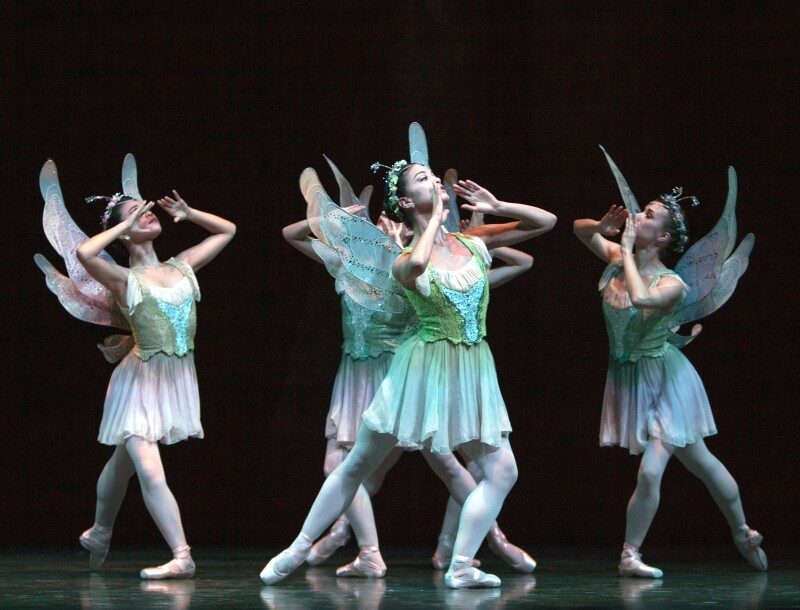One Doesn’t Need a Magic Flower to Fall in Love
Review of A Midsummer Night's Dream at Pacific Northwest Ballet

The story of A Midsummer Night’s Dream is complex. There are kings and queens, fairies, multiple love stories, magic spells, and a character whose head is replaced with that of a donkey’s. As if reading Shakespeare’s own original work wasn’t difficult enough, Pacific Northwest Ballet has taken on the fanciful tale in an even more challenging way: wordlessly. With music by Felix Mendelssohn and choreography by George Balanchine, the PNB company manages to share the Bard’s mystical comedy through ballet.
Act one begins in a forest of dreams. The elaborate set of this production is astounding. At times the forest is full is luscious pink roses and ballerinas portraying fairies and butterflies dance below them. A giant green tree frog watches over the forest dwellers. Of course, a magic flower, which causes anyone sprinkled with its pollen to fall in love with the next person they see, grows in a world like this.
Unfortunately for the characters of A Midsummer Night’s Dream, love isn’t all flowers and magic though. Rather, this magic flower complicates an already complicated series of love triangles. Helena loves Demetrius, who doesn’t feel the same, and Hermia and Lysander are in love with one another — that is until under the spell of the magic flower, Lysander drops Hermia and begins to love Helena instead, who has since begun to be loved by Demetrius with the help of the flower too (I told you it was complicated). All of this magic flower business is carried out by Puck, the fairy king’s jester and a mischievous fellow. Played by Eric Hipolito Jr., Puck is at once comical, endearing, and head-shakingly pesky.
Somehow all of this complication and the wavering feelings of the various characters is communicated by PNB’s dancers. With the help of color-coded costumes, the couples are fairly easy to tell apart, and their movements so clearly indicate their emotions as they sway between love and quarreling. The graceful violence with which Demetrius originally discards Helena is impressive. William Lin-Yee (Demetrius) and Lindsi Dec (Helena) dance with one another, yet against each other, pushing each other way only to be pulled back together again. Sarah Ricard Orza clearly communicates the heartbreak and desperation of Hermia when she finds that Lysander no longer loves her. Throughout the first act, there are moments of infatuation, comedy, fear, heartbreak, mischief, redemption, and more — all clearly communicated on par with the writings of Shakespeare himself.
Eventually all of the love struggles get sorted out and everyone pairs off nicely — Helena with Demetrius and Hermia with Lysander — concluding the plot of A Midsummer Night’s Dream. Yet, this all wraps up before the second act of PNB’s presentation. Accordingly, while as beautiful as any ballet should be, the second act unfortunately comes across as pretty self-indulgent. The entirety of it is spent on the characters’ weddings, which, although gorgeous, don’t contain the myriad of emotions so perfectly portrayed in the previous act. The weddings take longer than the characters’ processes of falling in love (and out of love and back in love again). Though, for anyone who has been to a wedding, it seems the self-indulgence and excessive length of this second act may be only fitting.
Pacific Northwest Ballet’s production of A Midsummer Night’s Dream comes across exactly like Shakespeare’s original work — mystical, funny, complex, at times a little boring, but ultimately an enjoyable romp. One doesn’t need the spell of a magic flower to love it.
A Midsummer Night's Dream
Pacific Northwest Ballet
April 11-19


